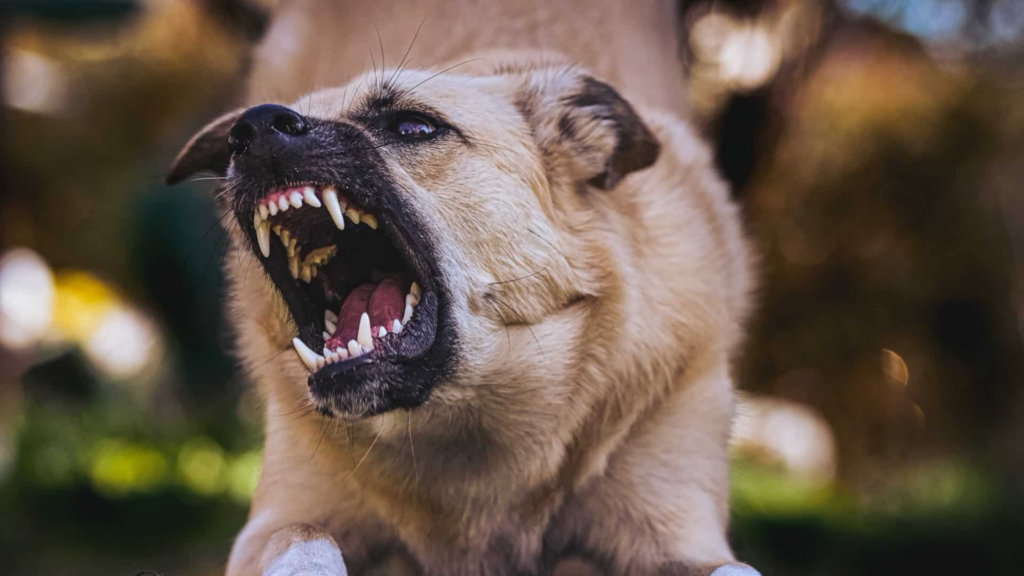Scientists conducted a comprehensive study to investigate the potential correlation between weather conditions, air pollution, and dog aggression towards humans. The study, published in the Scientific Reports journal, reveals intriguing findings suggesting that dogs, or the interactions between humans and dogs, exhibit heightened hostility on hot, sunny, and smoggy days.
New research suggests that dogs are potentially more prone to biting individuals on hotter, sunnier days and during periods of higher air pollution, as reported by the Independent.
The study reveals that the likelihood of dog bites happening under these conditions rises by as much as 11 per cent. Previous studies have indicated a similar correlation between elevated temperatures and increased aggression in humans, as well as higher levels of air pollution being linked to heightened aggression in various species including humans, Rhesus monkeys, rats, and mice.
Scientists conducted a comprehensive study to investigate the potential correlation between weather conditions, air pollution, and dog aggression towards humans. The study, published in the Scientific Reports journal, reveals intriguing findings suggesting that dogs, or the interactions between humans and dogs, exhibit heightened hostility on hot, sunny, and smoggy days. This sheds light on the potential societal burdens of extreme heat and air pollution, which extend beyond human impacts to include the costs associated with animal aggression.
Led by Clas Linnman and colleagues at Harvard Medical School in the United States, the research team delved into data on dog bites in eight major US cities: Dallas, Houston, Baltimore, Baton Rouge, Chicago, Louisville, Los Angeles, and New York City. The data spanned a significant period from 2009 to 2018, allowing for robust analysis and insights.
The analysis of the extensive dataset yielded compelling results. The researchers discovered a notable increase in dog bite incidence on days with higher UV levels, higher temperatures, and increased levels of ozone. Specifically, dog bites surged by 11 per cent on days with elevated UV levels, 4 per cent on hotter days, and 3 per cent on days with heightened ozone levels. Surprisingly, the study revealed a slight decrease of 1 per cent in dog bite incidence on days with higher levels of rainfall. However, there were no significant changes in dog bite incidence associated with fine particulate matter (PM2.5), an air pollutant commonly linked to adverse health effects in humans.
Also read | ‘Smiling’ deepsea snailfish, a unique creature in Pacific Ocean
While the findings provide valuable insights into the potential relationship between environmental factors and dog aggression, the researchers emphasize certain limitations. The dog bite records used in the study did not include crucial information regarding factors that can influence an individual dog’s risk of biting, such as breed, sex, or whether the dog had been neutered or spayed. Additionally, important details about prior interactions between the dog and the bite victim, including familiarity with the dog, were absent from the available data.
Also read | Meet Vectipelta barrette, the newest dinosaur species discovered by scientists
Given the complex nature of dog behaviour and the multitude of factors involved in dog aggression, further research is warranted to confirm and explore the observed relationship between canine aggression, elevated temperatures, and air pollution levels. Future studies could incorporate comprehensive data collection that includes additional variables to gain a more comprehensive understanding of the dynamics at play.
Understanding the potential triggers for dog aggression is crucial for promoting public safety and preventing dog bite incidents. By uncovering possible associations between weather conditions, air pollution, and canine hostility, this study provides valuable insights for policymakers, dog owners, and communities. Further research and awareness efforts can help develop strategies to mitigate the risk of dog bites and ensure the well-being of both humans and their furry companions in various environmental conditions.
WATCH WION LIVE HERE:
Sneha takes interest in everything that has political ramifications. Big time foodie and a tribal art fanatic. She graduated from Lady Shri Ram College, Delhi Uni

